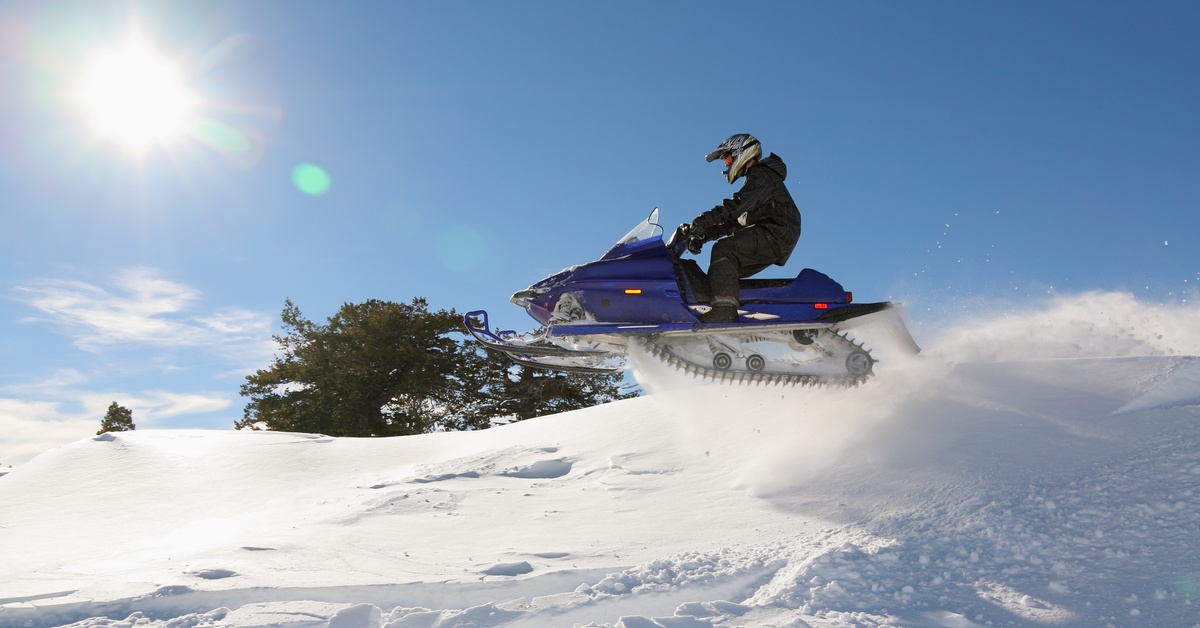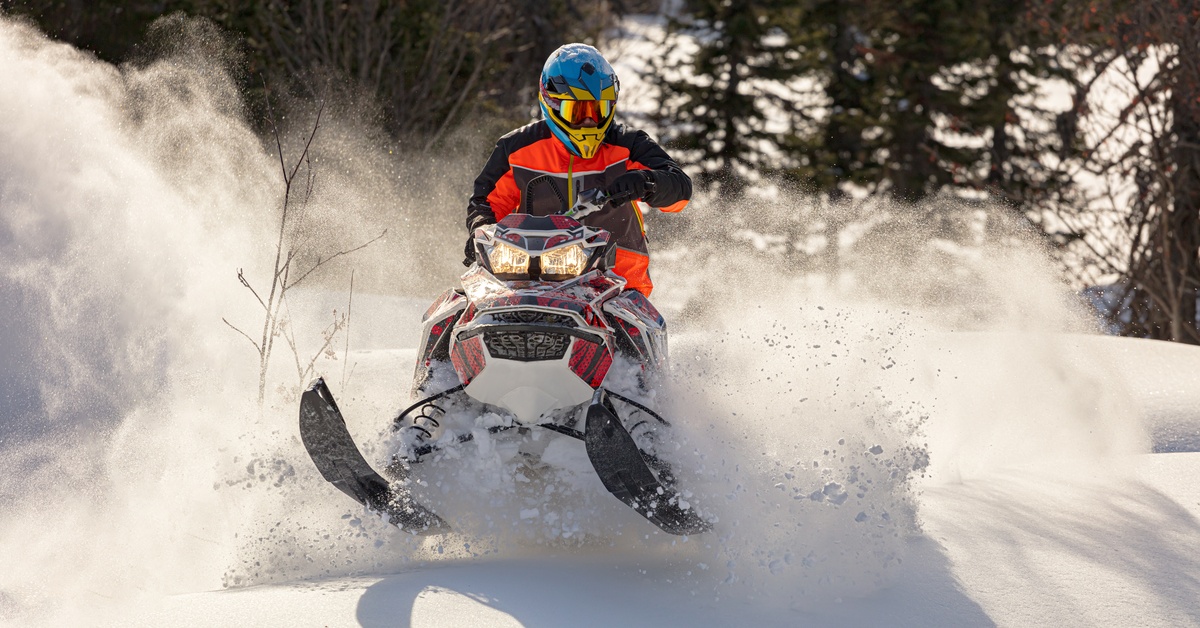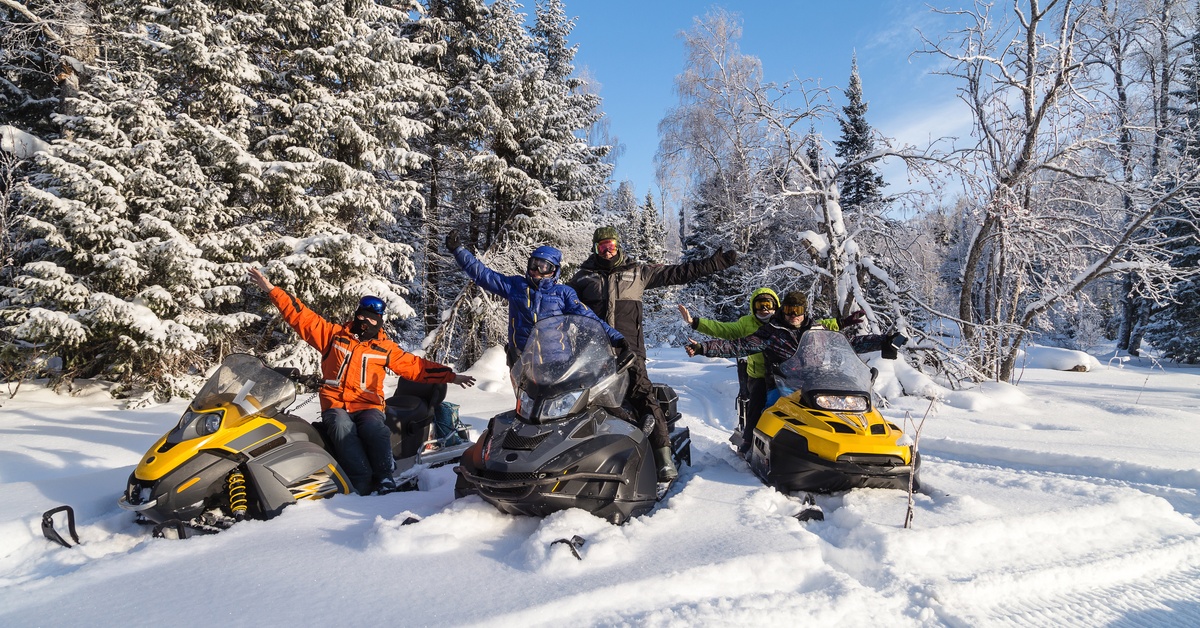
Snowmobiling offers exhilarating adventures through winter landscapes, but like any activity, it requires a level of responsibility. Wreckless riding can hurt you, other people, and animals, ruining the experience for everyone involved. When we respect the area we ride in, we give snowmobile riders a positive reputation and keep the trails open for everyone to enjoy. To help you maintain respectful practices on the trails, we've outlined snowmobile etiquette.
Share the Trail
As you ride through Idaho's beautiful wilderness, it can be easy to feel like your group is alone in the world. While you may not see other people or animals, they're out there, and you should ride with caution.
Yield to Others
Understanding right-of-way rules prevents conflicts and accidents on multi-use trails. Non-motorized users, including hikers, cross-country skiers, and snowshoers, always have priority over snowmobilers. If you notice pedestrians on the trail, slow your speed or come to a complete stop if they have to cross over your path.
If there's enough room to safely pass individuals, use a friendly voice to call out your intentions before slowly passing. If there doesn't appear to be enough room or if it's unsafe to pass, wait for the pedestrians to cross before proceeding.
In the event you see other snowmobilers on the trail, both of you should reduce your speed if one has to pass the other. Use hand signals to communicate your intentions, such as indicating your direction or announcing the number of riders in your group. Maintain a safe distance during the pass to avoid collisions or startling the other rider. If the trail is narrow, one snowmobiler should pull over to allow the other to pass safely.
Slow Down for Animals
There's also a good chance you'll see a few animals during your ride; after all, you're in their home. Seeing wildlife can be exciting or a bit scary, depending on the animal, but both deserve the same level of respect and consideration. Always maintain a safe distance from animals, as getting too close or chasing them puts both of you in danger.
Moreover, if animals block the trail ahead, stop your snowmobile and wait patiently for them to move naturally. Harassment of wildlife violates laws in most jurisdictions and can result in significant fines or license suspension.
Keep Noise Levels Down

While your snowmobile will naturally produce some noise, avoid getting too loud during your ride, as this can disturb wildlife and people in the area. This means no blasting music, excessive honking, or revving your engine unnecessarily.
If you rent snowmobiles for your ride, look for a company with high ratings as they're more likely to have well-maintained equipment. A properly functioning snowmobile will produce less noise because a well-maintained exhaust system effectively muffles engine sounds.
Riding Tip
Be mindful of your noise levels when riding early in the morning or late at night, as the quiet, open winter landscape can amplify sound. If the trail is near residential areas, excessive noise could disturb people who may still be asleep during these hours.
Stay on Marked Trails
There may be times when you want to ride off the trail for a bit to get a better view of the scenery or to explore thrilling terrain. However, trail markers exist for a reason and help keep snowmobiling enjoyable. Riding off marked routes compacts soil, damages plant roots, and creates erosion that can take years to heal naturally.
Additionally, trail systems often traverse both public and private lands through carefully negotiated agreements. Venturing onto unmarked areas may constitute trespassing, potentially resulting in legal consequences and jeopardizing access agreements for all riders. Property owners who experience trespassing issues may withdraw permission for trail systems, eliminating access for everyone.
Understand the Symbols
Trail markers use standardized symbols and colors to indicate direction, difficulty level, and important information. Some common trail symbols you may encounter include:
- Orange diamonds: snowmobile trails
- Green circle: Easy/Beginner
- Blue square: Intermediate
- Black diamond: Advanced
- Double black diamond: Expert/Extremely difficult
- Single dotted line: One-way trail
Only ride on trails designed for snowmobiles and stay on designated trails at all times to avoid damaging sensitive areas.
Follow Speed Limits
Speed limits are another respectful practice to follow on the trails. While going fast is fun and creates big clouds of snow behind your vehicle, it also creates dangers. Excessive speed reduces reaction time when encountering other riders, wildlife, or obstacles on the trail. Posted speed limits consider factors such as trail width, visibility, terrain difficulty, and typical usage patterns.
Slow down your vehicle as you approach corners, hill crests, and narrow passages because reduced visibility may occur. Be mindful of the other riders around you, and only pass when safe and appropriate.
Riding Tip
Some areas implement reduced speeds near residential zones, wildlife corridors, or environmentally sensitive areas. Familiarize yourself with local rules before riding, as speed limit violations can result in citations and fines.
Communicate Properly

Hand signals provide clear communication between riders when engine noise prevents verbal communication. Standard signals include a raised left hand for stopping, a left arm extended horizontally for left turns, and a left arm raised at a 45-degree angle for right turns. Consistent use of these signals helps prevent confusion and reduces the risk of accidents.
Clear communication becomes especially important when riding in groups or encountering other trail users. Riders should maintain visual contact with group members and use established signals to indicate hazards, stops, or changes in route. Leading riders bear the responsibility for setting an appropriate pace and communicating intentions.
Riding Tip
While there may be times when it's harder to hear, this doesn't mean you should ditch verbal communication. Always call out to other people as you approach them and let them know you're coming, since they may not see you if you solely rely on hand signals.
Leave No Trash
As with every outdoor adventure, take every piece of trash you create and pack it back into your bag. To keep cleanup easy, consider carrying a small trash bag, which allows proper disposal of waste items generated during rides.
Organic waste, including fruit peels and food scraps, should also be packed out rather than discarded on trails. These items take time to decompose in cold conditions and may attract wildlife to trail areas. Food waste can alter natural animal behavior patterns and create dangerous situations for both wildlife and future trail users.
Rent Your Snowmobiles
Adrenaline Outdoors has snowmobile rental services in Idaho Falls, ID. Renting a snowmobile allows you to experience new trails and terrain without having to transport your own snowmobile. This is a perfect option for anyone on vacation seeking fun, outdoor activities to enjoy with friends and family.
More Recent Stories




